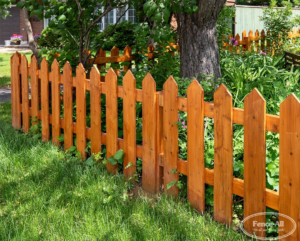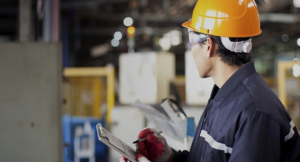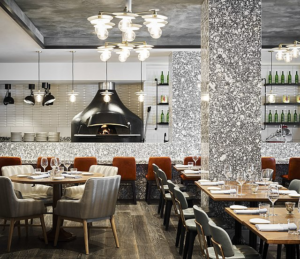After running its fleet of jeeps ragged in Vietnam, the Army needed a jack-of-all-trades light tactical vehicle. The result was the HMMWV, better known as a Humvee.
Sometimes, the military determines that vehicles like the Humvee are no longer required and are made available for purchase by foreign governments. Click Military Humvee For Sale to learn more.

The Humvee is a military vehicle used by the US Army and other militaries around the world. It is also known as an HMMWV, which stands for High-Mobility Multi-Purpose Wheeled Vehicle. AM General designed the Humvee, a series of four-wheel-drive trucks.
The first Humvees entered service in 1984. They were developed to replace vehicles such as the original jeep and the M151A2 Gama Goat. They were built to satisfy the requirements of not only the Army, but also the Marine Corps and the Air Force.
These vehicles are able to operate on a variety of terrain, from deserts to jungles. They are also able to transport large amounts of equipment and supplies over long distances. Humvees can be modified in a variety of ways, from adding mounted machine guns to wiring up command-guided anti-tank missile launchers. They have a unique design that makes them capable of negotiating extreme off-road conditions and narrow streets.
Because of their versatility, Humvees can be adapted to suit any military mission. In addition to their off-road capabilities, they can be fitted with armor and other accessories to protect their occupants from small arms fire and roadside explosive devices. They are also equipped with an explosion-proof fuel tank and run-flat tires, which allow them to continue operating even if a tire is flat.
Humvees were once the main mode of transportation in the war in Iraq, but that changed after the insurgents started using roadside bombs to kill US soldiers. The Pentagon responded by adding bolt-on armor to Humvees, which made them more resistant to damage but also added to their weight and decreased performance.
In late 2007, the Pentagon switched to vehicles from its Mine Resistant Ambush Protected (MRAP) program. These vehicles have an extra layer of steel over the vehicle’s aluminum body and are designed to withstand mine blasts, making them more effective against roadside bombs.
The Humvee is still in use by the military, but it is being replaced by the Joint Light Tactical Vehicle (JLTV). JLTVs have improved capability and protection and are expected to be in service until 2050. Humvees are also available for civilian purchase from government surplus auctions, such as GovPlanet. These vehicles must be properly inspected and titled before they can be driven on the street.
History of the Humvee
The military Humvee, officially known as the High Mobility Multipurpose Wheeled Vehicle (HMMWV) is a family of light, four-wheel drive, armored trucks that has been in use since 1984. It replaced the jeeps used by US troops around the world and has been adopted by numerous other countries as well.
The HMMWV’s roots can be traced back to the late 1970s when AM General, a division of General Motors, began designing prototype vehicles for the Pentagon. The HMMWV was designed to be a do-anything workhorse that could haul loads and carry soldiers across rough terrain with ease. The Army was impressed with the HMMWV’s capabilities and awarded AM General a contract to produce 55,000 of them.
When the first HMMWVs rolled into action during the Gulf War, they were a hit with soldiers and the American public alike. The trucks were a welcome relief from the cramped and noisy jeeps that had been in service for decades, but their popularity soared when they were put to the test in the dangerous urban battle zones of the Middle East. However, these early HMMWVs were only as protected as the aluminum bodies of the jeeps they replaced and proved to be no match for roadside bombs or rocket-propelled grenades.
In the years that followed, the HMMWV evolved into several specialized versions to handle everything from delivering medical supplies to transporting munitions. They also morphed into 2.5-ton Expanded Capacity Vehicles, or ECVs, which could carry more cargo than standard HMMWVs. They could even be converted into pseudo-tanks by mounting a roof-mounted tube-launched, optically tracked, wireless-guided (TOW) anti-tank missile and a 105mm howitzer.
In 1999, GM bought the rights to the HMMWV name from AM General and began marketing it as a civilian vehicle under the Hummer brand. Today, the Humvee is still a favorite with soldiers and a beloved icon of America’s power projection abroad. Few other vehicles have the same combination of offroad ability, adaptability, and mod-ability as a Humvee. They can climb steep hills, clear 16 inches of obstacle under their lowest point, and tackle 5-foot deep water with the proper fording kit.
What is a Military Humvee?
The military Humvee, or HMMWV as it’s known by the US Army, is a multi-purpose vehicle designed to transport cargo and soldiers in a variety of environments. The vehicle was developed in the 1970s as a collaboration between AM General, a defense contractor based in Indiana and the US Army. It has served in a wide range of operations since its introduction and has been adapted to many different missions.
Unlike civilian vehicles, the HMMWV is a four-wheel drive vehicle that can travel over rough terrain with ease. It can also be equipped with a variety of weapons, including the Browning M2HB.50 caliber heavy machine gun, Mk 19 40mm automatic grenade launcher, and the BGM-71 TOW anti-tank missile system. This makes it an ideal choice for military personnel who need to navigate dangerous terrain while on a mission.
Military Humvees have been used in a number of missions around the world, from the US invasion of Panama to the recent battles in Iraq and Afghanistan. The vehicle is also widely recognized as the main vehicle of the military forces portrayed in the 2005 film War of the Worlds. The HMMWV made some significant appearances in the movie as part of the military forces deploying to counter the alien invasion.
If you’re interested in purchasing a military Humvee, it’s important to check with your local Department of Motor Vehicles before making the purchase. The vehicle must meet all state road-worthiness requirements, including tire, exhaust, and safety equipment. You will also need to obtain a license, insurance, and a vehicle inspection certificate.
The military HMMWV is a unique and intimidating vehicle that stands out from other vehicles on the road. It’s no wonder that the experts at GovPlanet get so many questions about the vehicle. They’ve helped people from all walks of life own their very own HMMWV, whether they’re a die-hard fan or just curious about the history behind the Humvee. You can find the answers to all of your questions about military Humvees on the GovPlanet website, and if you have any additional questions, you can always contact our team.
What is a Humvee for Sale?
Military Humvees are incredibly reliable, well-maintained vehicles that can be driven for years. They’re built to withstand rough weather and terrain. When properly cared for, a Humvee can run 300,000 to 500,000 miles. When not driven off-road, they’re also very fuel efficient. However, like any vehicle they will eventually need to be replaced or repaired.
The HMMWV is unique in that it can ride much higher than most trucks without becoming too top-heavy. This makes it easier to transport in aircraft and to drop from them via parachute. This also gives the HMMWV a distinctive silhouette that’s easy to recognize. Its signature feature is a pair of loops on the outside of the frame that can be hooked to a cable, allowing it to be towed by another vehicle or even trailered behind a boat.
A Humvee can be modified in many ways, including adding lights and a radio. Some people also install windows and seats to make the vehicle more comfortable. Depending on the modifications, a military Humvee can cost between $5,000 and $30,000. Some buyers are interested in purchasing a used hummer for sale at auction or from a private seller. This is a great option if you’re looking to save money. However, it’s important to remember that military Humvees can still be difficult to drive on public roads. You’ll need to complete a process called “street legalization.” This includes a bill of sale and an SF97 form. These documents let the government know that you’re using the vehicle for civilian purposes and not military purposes.
Before you start dreaming of cruising down the highway in your very own Humvee, it’s essential to consider all of the costs associated with owning one. You’ll need to make sure you can afford it and that you won’t break the bank in the long run. Here are some of the most common costs of owning a military Humvee:






